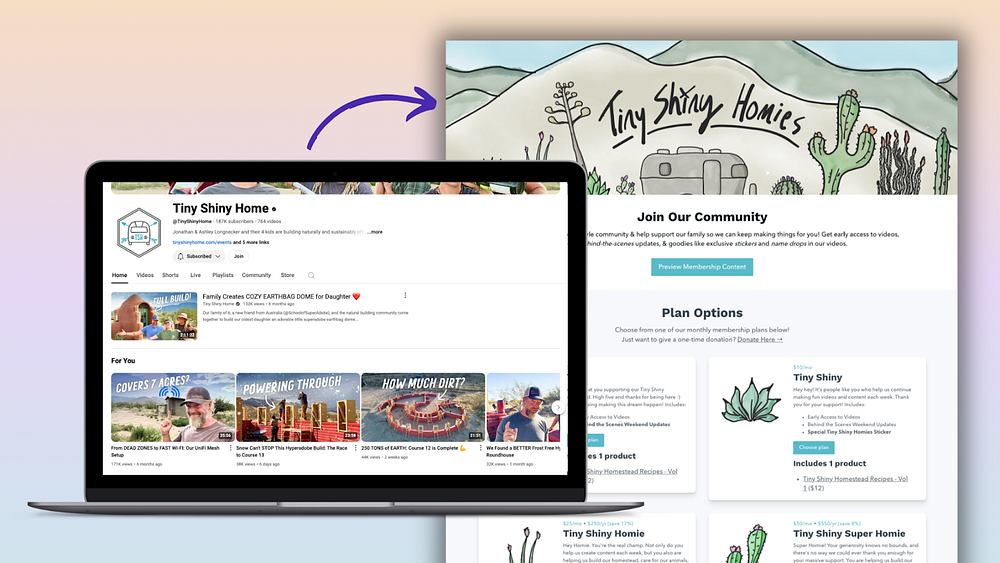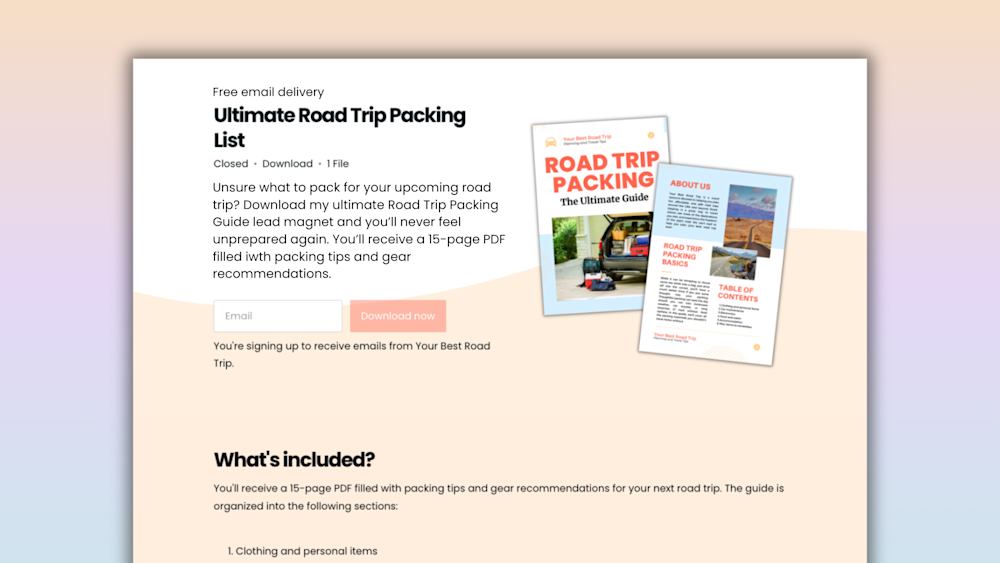You’ve created a digital product that you’re proud of, and you’re ready to share it with the world. You know that it can help your audience accomplish their goals and overcome obstacles.
There’s just one thing left to do: Sell your digital product.
But as a solopreneur or small business owner, your time is valuable — and scarce. You need proven sales tactics that help you build trust with your customers. And you don’t have time to reach out to every lead with a sales pitch or start making cold calls.
Enter sales psychology.
You don’t need to be a pro salesperson or hire a sales team to use psychology-based sales techniques. You can use them in your email marketing, social media, and sales copywriting. As copywriting pro Joanna Wiebe puts it, “Copy is your online salesperson.”
In this article, we’ll share six psychological sales tips to help you sell more digital products. And if the phrase “sales psychology” makes you think of sleazy salesmen or manipulative tricks, don’t worry. Our first tip is all about avoiding that trap.
1. Be human
When you think of a typical salesperson, it may call to mind a classic sales stereotype: The used car salesman. (It definitely used to for me.)
If you feel that way, you’re not alone.
In the New York Times Business Bestseller To Sell Is Human, author Daniel Pink recounts asking a group of people what word comes to mind when they hear “sales” or “selling”.
Here’s a word cloud of their answers. (The size of each word represents how frequently that word appeared in the responses.)

And though only 17% of salespeople think of themselves as pushy, 50% of prospective customers say otherwise.
How do you avoid falling into that stereotype when selling information products?
Be yourself. Be human.
It may sound like a cheesy motivational poster, but it’s also an effective sales technique.
Here’s why: Customers want to buy from someone who is open, honest, and authentic.
-
86% of consumers cite authenticity as a key factor when deciding what brands they like and support.
-
56% of customers stay loyal to brands that “get them”.
-
89% of customers remain loyal to brands that share their values.

Authenticity also makes you more relatable. It’s human nature to trust what’s similar to us more readily than things that are different from us. (Plus, being honest with your audience is the right thing to do.)
To connect with your customers, create an About page on your website or add an About section to your sales pages. A well-written About page makes customers feel like they know and trust you, which in turn builds loyalty and creates a better customer experience.
Video is another great way to help people get to know you.
45% of consumers think that video is the most engaging content type, so consider including a video introducing yourself, your business, and your product. Just keep it short: 68% of viewers will watch a video to the end if it’s less than 60 seconds.
All in all, being relatable and authentic is a useful sales tactic — and it’s even more powerful when you give your customers something they want.
2. Make a trade
The principle of reciprocity is a Psych 101 classic: When you give someone something, they’re more likely to return the favor.
In other words, it’s the golden rule: Treat others the way you want them to treat you.
In sales and marketing, one of the best examples of reciprocity principles is lead magnets.
A lead magnet is a resource — usually in the form of a free digital download — that customers receive in exchange for their contact information.
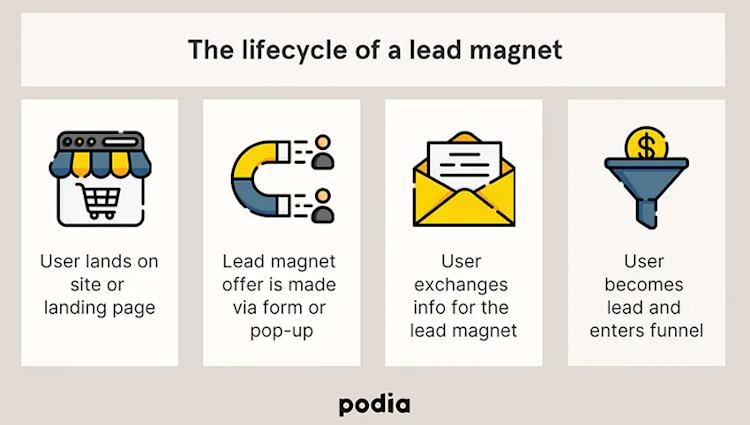
Once a new lead opts in, they enter your sales funnel, and you start to build a relationship with them. Then, down the line, you can convert them into a customer.
In order for the principle of reciprocity to work here, you need to offer lead magnets that your audience believes are worth handing over their email address for:
-
30% of consumers would give a brand their email address in exchange for exclusive content.
-
Two-thirds of customers are willing to share their personal information with companies in exchange for a perceived value.
-
People are willing to exchange their contact information for actionable, informative content, like whitepapers and ebooks.
And when you offer potential customers that content, those signups are worth their weight in gold. Email marketing has an R.O.I. of $42 for every $1 spent.
If you’re not sure what kind of lead magnet to offer, check out this guide to creating a lead magnet your customers will love.
In addition to growing your email list, giving away a free digital download can make people more inclined to buy your products. One study found that consumers are even more drawn to free bonus items than to discounts.
For example, Marketing Showrunners offered an ebook by co-founder Jay Acunzo to people who enrolled early in their Showrunner Sessions course:

Making that bonus free content only available for a limited time also creates a sense of urgency for potential customers. That’s what our next psychological sales technique is all about.
3. Tap into FOMO
Have you ever wondered what makes Black Friday and Cyber Monday sales so popular year after year?
Sure, the prices are low. But scarcity and urgency are powerful motivators, especially when it comes to buying behavior.
These sales holidays tap into our “fear of missing out,” a.k.a. FOMO. And FOMO is a powerful tool:
-
60% of people make purchases because of FOMO.
-
89% of Americans say that an exclusive offer would make them likely to shop with a brand.
-
48% say an exclusive offer would make them purchase sooner.
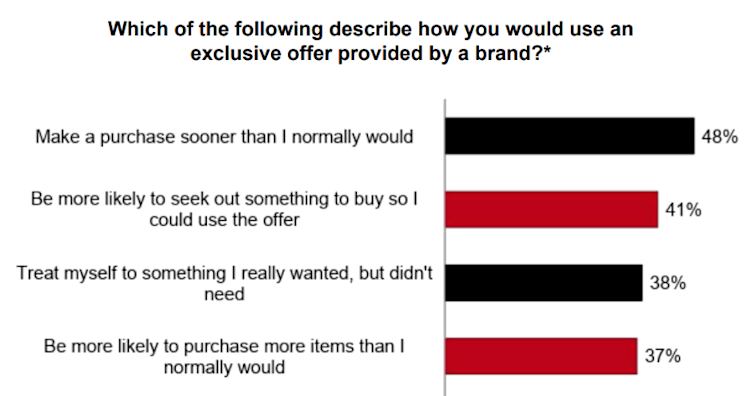
Scarcity is one of psychologist Dr. Robert Cialdini’s universal principles of persuasion. In his book Influence: The Psychology of Persuasion, Cialdini explains the psychology behind FOMO:
“Our typical reaction to scarcity hinders our ability to think. When we watch something we want become less available, a physical agitation sets in. Especially in those cases involving direct competition, the blood comes up, the focus narrows, and emotions rise.”
In other words, when there isn’t enough of something we want to go around, we want it more.
A study by Wageningen and Tilburg Universities on product scarcity found that shoppers chose the scarce item over the non-scarce one because they believed those limited-supply items were more popular.
That’s what makes flash sales such an effective discount strategy for digital downloads and other products.
Try these tactics to leverage your audience’s FOMO:
-
Create a deal that lasts for a limited time, then add a countdown timer on your product page. According to one case study, it can nearly triple your conversion rate.
-
Use urgency in your email subject lines. Subject lines that convey urgency have as much as a 22% higher open rate than those that don’t.
-
If you don’t want to lower your pricing, offer a limited number of discounts or products.
The Workshops Collective uses that last technique on the landing page for The Space Camp workshop:

By letting people know that only four spots remain and explaining the value of such a small group, workshop leader Erin makes that “Join the Adventure” call-to-action (CTA) even more appealing.
Urgency and scarcity work because FOMO is an emotional thing. And our next sales strategy is all about the power of emotions.
4. Tell a story
When you have a product that you’re super proud of, it can be tempting to include every single product detail in your description. After all, detailed product content is one of the top reasons shoppers complete transactions.
But a cut-and-dry list of features is far less compelling than copy that taps into your audience’s emotions.
A study by neuroscientist Antonio Damasio found that emotions are a central part of virtually every decision humans make, including buying decisions.
Customers want that emotional connection with you, too: 65% of consumers say that being emotionally connected to a brand makes them feel like the company cares about them.
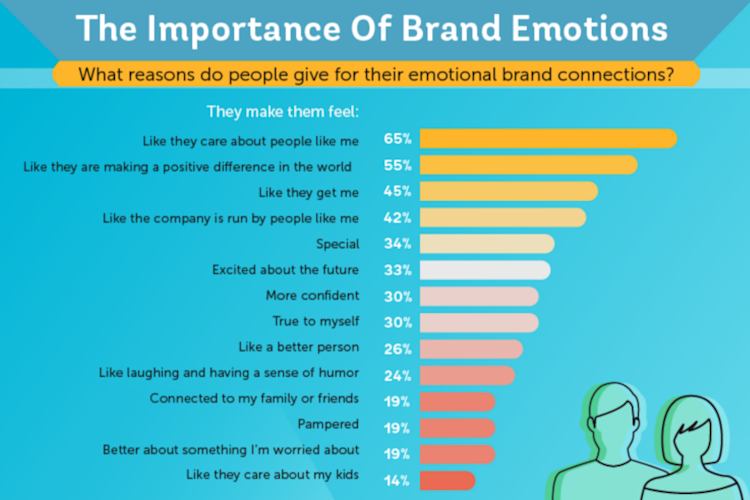
Customers who feel a connection with a brand have a 306% higher lifetime value and tend to stick with the brand for longer.
Your sales page writing is a great opportunity to start building that connection. The headline on Natalie Sisson’s homepage is a stellar example: “Hey lovely. You deserve more money, joy and freedom. Let’s go get ‘em!”
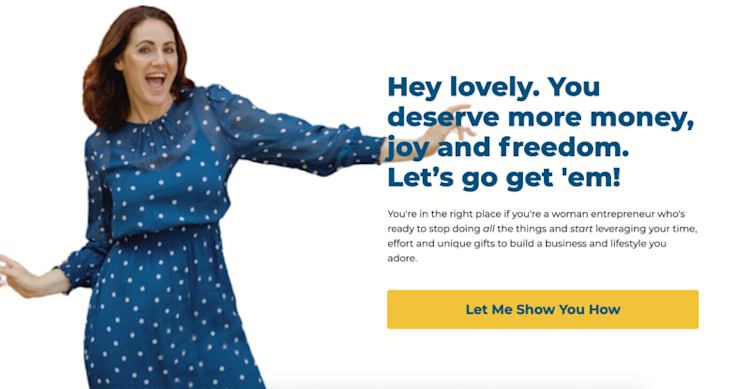
Natalie clearly understands her audience’s pain points — wanting more money, joy, and freedom — and uses kind, validating language. She seems to know just what her customers are going through, making her solution all the more credible.
One of the best ways to tap into your customers’ emotions is to tell a story — and make them the main character.
Joe Lazauskas, Head of Content at Contently and co-author of The Storytelling Edge, notes that stories are more than just entertainment. They light up our brains:
“Essentially, our brains run on electrical pulses, and when we hear stories, our brains light up. Neuroscientists have this saying that ‘neurons that fire together, wire together.’
So, when we’re hearing a story and our brain is lighting up, you have all of these neurons that are then wiring together, which triggers us to remember more of the information we’re getting.”
When you make your customer the hero of your brand story, it helps them imagine themselves using and benefitting from your product.
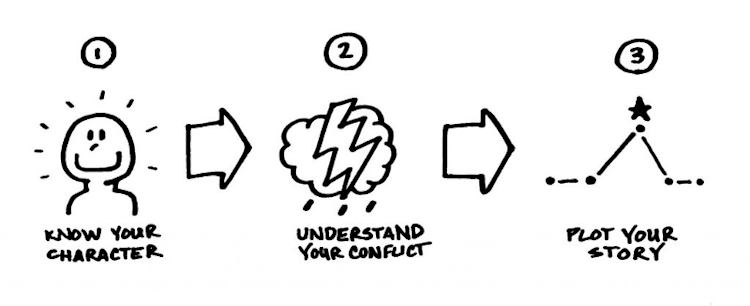
On a neuroscientific level, we’re programmed to respond to stories that we can see ourselves in, Lazauskas explains.
“When you’re speaking to your audience, you either want to present a main protagonist in the story — it could be a client, a customer, a thought leader, someone who did something super cool for another company — that they can see themselves in.
Or, as the author, you want to speak to them directly.”
To make your customer the main character of your story, use the word “you” instead of “I”. Using second-person language can help you write better sales copy and tell a more engaging story.
For example, mindset and business coach Becky Mollenkamp sells a Money Mindset course that helps entrepreneurs and freelancers change the way they think about money. Money can be a personal and emotional subject — and Becky’s sales copy doesn’t shy away from that.
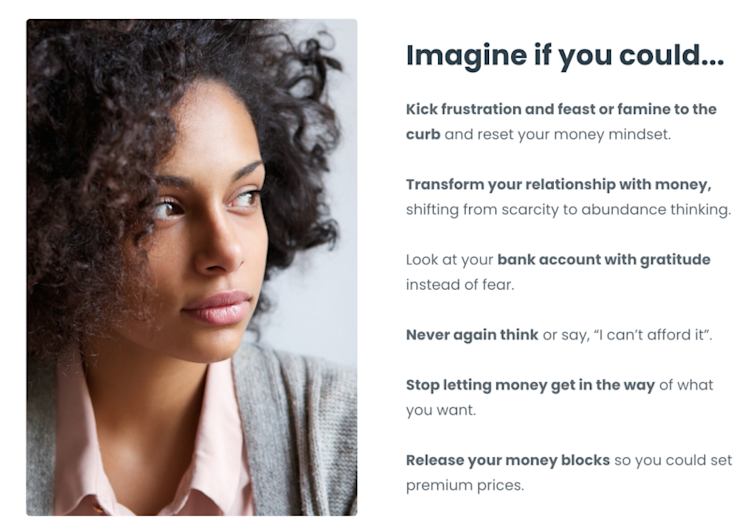
Instead, she uses emotional language and the second person to paint readers a picture of what they can accomplish by completing the course. If the story Becky tells resonates with a reader, they know that her product is right for them.
Bottom line:
No matter what product they sell, the best salespeople use storytelling as a powerful tool to help customers make buying decisions. To make those decisions even easier, read on.
5. Don’t overwhelm them with options
This tip is short and sweet: Don’t give your customers too many options to choose from.
Hick’s Law states that when we remove stimuli and choices, we can make decisions more quickly.
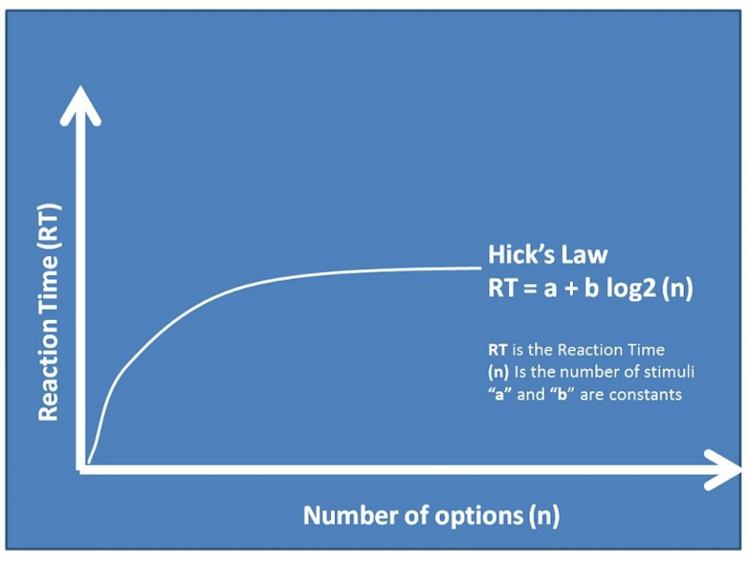
In other words, the more options you give someone, the longer it takes for them to choose one — and they may not make a decision at all.
64% of global consumers have said they feel there’s too much choice online.
When you do all of your selling online, creating a seamless user experience on your sales page makes a big difference. Research shows that having just one CTA on your landing page leads to higher conversions, but over 68% of businesses have five or more.
Help potential customers avoid analysis paralysis and make their purchase decision easier by sticking to just one CTA.
To learn more about creating CTAs that convert, check out our guide to landing page best practices — which, coincidentally, includes our final sales tactic.
6. Use social proof
Coined by Dr. Robert Cialdini in Influence, the concept of social proof means that “we view a behavior as more correct in a given situation to the degree that we see others performing it”.
What does that mean in the world of sales?
When it comes to building credibility, customer reviews and testimonials are your most powerful sales tools. They can be more effective than even the most beautiful sales page copy.
Here’s why: Only a third of people say they trust the brands they buy from. But 72% of consumers say positive reviews and testimonials make them trust a business more.
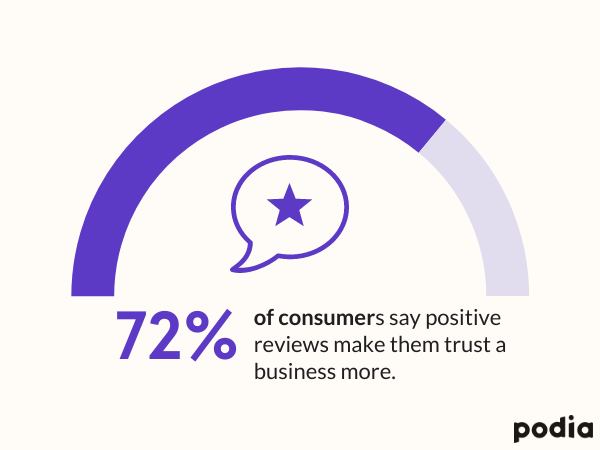
Across industries, potential customers who look at user-generated content like reviews and testimonials convert at a 161% higher rate than people who don’t. And conversion rates rose by 380% when a higher-priced product’s landing page included reviews.
Sales page testimonials are particularly important if you’re a coach or consultant. Your brand is all about how you interact with and help your clients, so showcasing your clients’ results and feedback shows potential customers, “This could be you.”
For example, online startup coach and entrepreneur Shalena D.I.V.A. shares client testimonials on her About page:
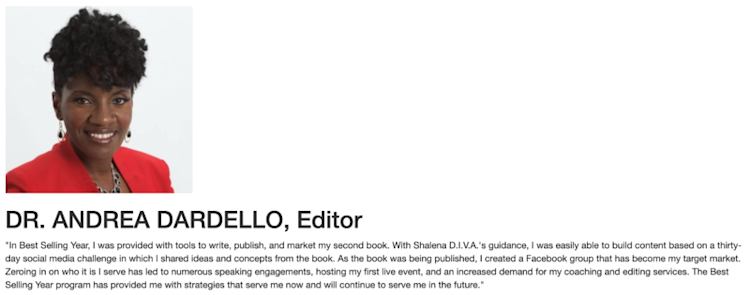
Reviews like Dr. Dardello’s highlight the value of Shalena’s coaching services and courses. They also tell potential customers what they can expect to gain by enrolling.
The latter is even more critical for products that offer specific results.
Austin of The Impeccable Investor helps clients learn more about the stock market so that they can make better investments. He features his students’ results on his testimonials page:

These testimonials show Austin’s target audience that they can see real returns by learning about the stock market from Austin. Potential customers can feel confident buying Austin’s course because other people like them have seen actual results.
To learn more about using social proof to boost your credibility and make more sales, check out our guide on how to ask for testimonials, including templates for requesting testimonials.
Science-backed tips to make more sales
You don’t have to be uncomfortable to be a great salesperson. Instead, incorporate these sales psychology techniques in a way that feels authentic for you and your brand.
To recap, here are the six sales psychology tactics we covered today:
-
Be human. People buy from people they can relate to, and consumers value authenticity.
-
When you ask your customers for something, give them something valuable in exchange.
-
FOMO is a natural feeling. Use limited time or quantity discounts to tap into it.
-
Tell a story and make your customer the main character. Storytelling helps build emotional connections and makes information more memorable.
-
Don’t give your customers too many options. Stick to one CTA to avoid analysis paralysis.
-
Boost your credibility by including social proof. Use testimonials and reviews to make potential customers more confident in their purchase.
Whichever sales tactics you decide to use, remember that “honesty is the best policy” is cliche advice for a reason.
When you lead with transparency and respect for your customers, you’ll build relationships that will last longer than any sneaky sales trick could create. And those customers will spread the word about your business, which will bring in even more customers who value that authenticity.
It’s a powerful cycle — and you can start it right away.
